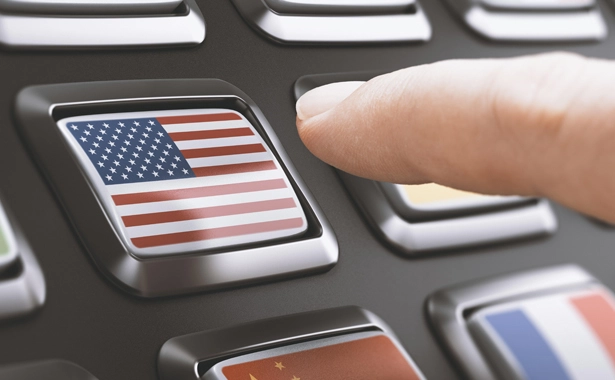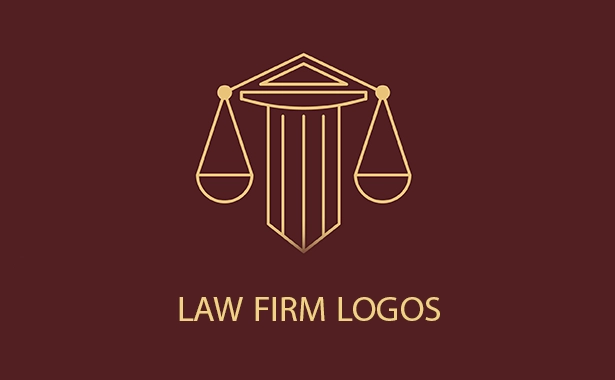Contents
Logo registration in the USA is a crucial step for protecting your brand’s identity and ensuring its exclusive use. This process involves several key steps, from conducting a thorough trademark search to filing your application with the United States Patent and Trademark Office (USPTO). Understanding the intricacies of this procedure can help you safeguard your logo, prevent unauthorized use, and establish a strong legal foundation for your brand. This guide will walk you through the essential steps to successfully register your logo in the USA.
Is a Logo Intellectual Property?
A logo is a graphic mark, emblem, or symbol used to aid and promote public identification and recognition. It represents a brand, company, organization, product, or service and is often designed to be instantly recognizable and memorable. Logos can be purely graphical (symbols/icons) or can include the name of the organization (logotypes or wordmarks). A logo is considered a form of intellectual property. Intellectual property (IP) refers to creations of the mind, such as inventions, literary and artistic works, designs, symbols, names, and images used in commerce. A logo falls under the category of trademarks, which are a type of intellectual property.
Benefits of Registering a Logo as Intellectual Property
- Exclusive Rights: The owner gains exclusive rights to use the logo in connection with the goods or services for which it is registered.
- Legal Recourse: The owner can take legal action against anyone who uses the logo without permission.
- Brand Recognition: Protecting the logo helps maintain the brand’s identity and ensures that customers can reliably associate the logo with the brand’s products or services.
- Asset Value: A registered logo can add significant value to a business, as it becomes a recognizable and trusted symbol of the brand’s reputation and quality.
By registering a logo as a trademark, you ensure that it is recognized as your intellectual property, providing both legal protection and added value to your brand.
Different Types of Logos
Logos come in various forms, each designed to convey a brand’s identity and message uniquely.
Wordmarks (Logotypes): These logos consist entirely of the brand’s name, typically styled in a unique, custom font. Examples include Google, Coca-Cola, and Disney.
Lettermarks (Monograms): These logos are made up of the initials or abbreviations of a company or brand name. Examples include IBM, HBO, and CNN.
Pictorial Marks (Logo Symbols): These logos feature a graphic icon or symbol that represents the brand. They are often simple and highly recognizable. Examples include Apple’s apple, Twitter’s bird, and Target’s bullseye.
Abstract Marks: These logos use abstract geometric shapes or designs that do not represent anything recognizable but convey a unique visual identity. Examples include Nike’s swoosh and Adidas’s three stripes.
Mascots: These logos include an illustrated character that represents the brand. Mascots often convey a friendly, approachable image. Examples include KFC’s Colonel Sanders, Michelin’s Michelin Man, and Planters’ Mr. Peanut.
Combination Marks: These logos combine a symbol or icon with a wordmark or lettermark. They can be used together or separately. Examples include Adidas (symbol and wordmark), Burger King (name and icon), and Lacoste (crocodile and text).
Emblems: These logos feature the brand name within a symbol or icon, often resembling a badge, seal, or crest. Examples include Starbucks, Harley-Davidson, and BMW.
Dynamic Marks: These are adaptable logos that change in appearance based on context or use. They offer flexibility while maintaining brand recognition. Examples include Google Doodles (the Google logo changing for holidays and events) and MTV (varying graphics while keeping the logo shape).
Each type of logo has its own strengths and can be chosen based on the brand’s needs, industry, and target audience.
Can a Logo Be Registered for Both Trademark and Copyright Protection?
The answer is yes, a logo can be registered for both trademark and copyright protection, but they serve different purposes and offer different types of protection.
Trademark Protection: A trademark protects symbols, names, and slogans used to identify goods or services. Registering a logo as a trademark with the United States Patent and Trademark Office (USPTO) or relevant authorities in other countries ensures that only you can use that logo in connection with the goods or services you provide. This helps prevent others from using a similar mark that could confuse customers.
Logo Copyright Protection: Copyright protects original works of authorship, including artistic works like logos. When a logo is original and creative enough, it can be protected by copyright law. This means that you have the exclusive right to reproduce, distribute, and display the logo. Copyright a logo is automatically granted upon creation but registering it with the U.S. Copyright Office or the equivalent in other countries can provide additional legal benefits.
By securing both trademark and copyright protection for a logo, you can comprehensively protect your brand identity and creative work from unauthorized use.
How to Get a Logo Trademarked in the USA in 2024
In the United States, the process for logo registration as a trademark and maintaining its protection involves several steps:
- Search for Existing Trademarks
Use the United States Patent and Trademark Office (USPTO) Trademark Electronic Search System (TESS) to search for existing trademarks. Ensure your logo is unique and not similar to existing trademarks.
- Prepare Your Logo
To trademark your logo, start by finalizing it in a digital format, ensuring it is a high-quality image that accurately represents your brand. Next, classify your goods or services to determine the appropriate trademark class. The USPTO uses the Nice Classification system, which categorizes goods and services into different classes.
- Choose the Basis for Filing
If you are already using the logo in commerce, you can file based on “use in commerce.” However, if you have not yet used the logo but plan to do so, you can file based on “intent to use.”
- File the Trademark Application
To begin the application process, create an account on the USPTO website if you do not already have one. Next, fill out the trademark application form on the USPTO website, providing details about your logo, the goods or services it represents, and the basis for filing. Finally, pay the filing fee, which is usually between $250 and $350 per class of goods or services, and submit your application.
- Application Review and Publication
The USPTO will examine your application to ensure it meets all requirements and may contact you if additional information is needed or if there are any issues. If your application is approved, your logo will be published in the USPTO’s Official Gazette, allowing others to oppose your trademark if they believe it infringes on their rights.
- Respond to Oppositions (if any)
There is a 30-day period during which others can file an opposition to your trademark. If an opposition is filed, you will need to respond and possibly defend your application.
- Receive Your Trademark Registration
If there is no opposition or you successfully overcome any opposition, the USPTO will issue a registration certificate for your logo.
- Maintain Your Trademark
Ensure you continue to use your logo in commerce and file the necessary maintenance documents to keep your trademark active. These filings include a Declaration of Use between the 5th and 6th year, as well as renewal filings every 10 years.
Laws and Regulations Governing Logo Trademarks in the USA
Trademarking a logo in the USA involves understanding several key laws and regulations that govern trademarks. Here are the main laws related to trademarking a logo:
- The Lanham Act (Trademark Act of 1946)
The Lanham Act is the primary federal statute governing trademarks, service marks, and unfair competition. It provides the legal framework for trademark registration and enforcement in the USA. Key provisions of the Lanham Act define what can be trademarked, including logos, names, and slogans; establish the federal registration process; provide legal remedies for trademark infringement; and address issues of trademark dilution and unfair competition.
- Trademark Rules of Practice
These rules outline the procedures and requirements for filing and maintaining trademarks with the United States Patent and Trademark Office (USPTO). Key provisions specify the application process, including required information and documents; detail the examination process, publication, and opposition procedures; and describe the renewal and maintenance requirements for trademarks.
- Federal Trademark Dilution Act (FTDA)
The FTDA provides protection for famous trademarks from uses that dilute their distinctiveness, even in the absence of confusion. It protects famous trademarks from dilution by blurring (weakening of the mark’s distinctiveness) and dilution by tarnishment (harm to the mark’s reputation).
- State Trademark Laws
In addition to federal laws, each state has its own trademark laws and registration processes. State registrations can provide additional protection, especially for businesses operating primarily within one state. Key terms include procedures for state trademark registration and enforcement and remedies for state-level trademark infringement.
- Common Law Trademark Rights
Common law trademark rights arise from the actual use of a trademark in commerce, even without federal or state registration. They provide trademark protection based on first use in commerce and allow for legal action against parties that infringe on common law trademarks.
- Madrid Protocol
The Madrid Protocol is an international treaty that allows for the registration of trademarks in multiple countries through a single application. Madrid Protocol facilitates international trademark registration and protection and allows US trademark holders to extend their protection to other member countries.
A key standard in trademark law used to determine whether one trademark infringes on another. If consumers are likely to be confused about the source of goods/services, infringement may be found. Trademarks must be distinctive to be protected. This includes being inherently distinctive or having acquired distinctiveness through use. Trademark owners can take legal action against infringers and seek remedies such as injunctions, damages, and the destruction of infringing goods.
How to Get Logo Copyrighted in the USA in 2024
Getting a logo copyrighted in the United States involves registering the logo with the United States Copyright Office including:
- Determine Eligibility
Ensure that the logo is an original work of authorship, meaning it has been independently created and possesses at least some minimal degree of creativity. Simple designs, common symbols, or geometric shapes may not qualify for copyright protection. The logo should incorporate unique graphic design elements.
- Prepare the Application
- Create a Digital Copy of the Logo: Prepare a high-quality digital file of the logo (e.g., JPEG, PNG, PDF).
- Gather Necessary Information: Gather information about the author of the logo, the copyright claimant, and the year of creation.
- File the Application
- Online Filing: Use the U.S. Copyright Office’s electronic filing system (eCO). Create an account or log in to your existing account.
- Complete the Application Form: First, select “Visual Arts” as the type of work. Then provide detailed information about the logo, including the title, author, claimant, and date of creation. Finally, upload the digital copy of the logo.
- Pay the Filing Fee: The standard filing fee for a single work is typically around $45 (subject to change, so check the latest fees on the Copyright Office website). Pay the fee using a credit card or other accepted payment methods.
- Submit the Application
Review all the information and ensure that it is accurate. Then submit the completed application and the digital copy of the logo.
- Processing by the Copyright Office
The Copyright Office will review the application. This process can take several months. If there are any issues or additional information is required, the Copyright Office will contact you.
- Receive Certificate of Registration
Once the application is approved, you will receive a Certificate of Registration. This certificate serves as official documentation of your copyright.
What Is the Difference between Logo Copyright and Logo Trademark Protection?
Copyright protects the creative design of the logo, while trademark protects the logo as an identifier of goods or services. Copyright aims to protect artistic and literary works, whereas trademark aims to prevent consumer confusion regarding the source of products or services.
Combining copyright and trademark protection can offer comprehensive legal coverage for your logo, safeguarding both its design and its use in commerce.
Advantages of Registering a Logo with USPTO
Registering a logo with the United States Patent and Trademark Office (USPTO) offers several significant benefits:
- Legal Protection: Registering a logo grants the owner exclusive rights to use the logo in connection with the specified goods and services nationwide. It also provides a legal presumption of ownership and the exclusive right to use the mark, making it easier to prove in court.
- Deterrence: Registration puts others on notice that the logo is legally protected, which can deter potential infringers. The logo will be listed in the USPTO’s online database, making it accessible to anyone conducting a trademark search.
- Enhanced Legal Remedies: Registration provides the right to bring a lawsuit in federal court for trademark infringement. Registered trademarks may be entitled to enhanced damages and attorney’s fees in cases of infringement.
- Nationwide Protection: Federal registration provides protection across the entire United States, regardless of the geographic area of actual use. It also allows the trademark owner to prevent others from registering a confusingly similar mark.
- Use of ® Symbol: Registered trademarks can use the ® symbol, which signifies that the logo is officially registered with the USPTO and is legally protected.
- International Protection: A USPTO registration can be used as a basis for obtaining registration in foreign countries through international treaties like the Madrid Protocol. This facilitates the protection and enforcement of trademark rights in multiple countries.
- Enhanced Brand Value: Registration enhances the credibility and value of the brand, making it more attractive to investors, partners, and customers. A registered trademark is a valuable intangible asset that can be sold, licensed, or used as security for financing.
- Protection Against Counterfeiting: Registration enables the trademark owner to record the logo with U.S. Customs and Border Protection (CBP) to prevent the importation of counterfeit goods bearing the trademark.
- Market Expansion: Registered trademarks provide a solid foundation for expanding business into new markets and regions, both domestically and internationally.
- Continuous Rights: As long as the trademark is maintained and renewed periodically, the rights can last indefinitely, providing long-term protection for the brand.
By registering a logo with the USPTO, businesses and individuals can secure these advantages, ensuring robust protection and support for their brand’s growth and integrity.
Steps to Take If Your Trademark Application Is Rejected
If a trademark application is rejected by the United States Patent and Trademark Office (USPTO), several steps can be taken to address the issue. Here is what happens and what you can do if your trademark application is rejected:
Receive an Office Action
The USPTO will issue an Office Action, which is a letter explaining why the application was rejected. The Office Action will detail the specific reasons for rejection and any issues that need to be addressed.
Types of Rejections
- Substantive Rejection: Substantive rejections are based on legal grounds, such as the likelihood of confusion with an existing trademark, descriptiveness, or failure to function as a trademark.
- Non-Substantive Rejection: These are procedural issues, such as missing information, incorrect filing basis, or improper specimen.
Review the Office Action
Carefully read the Office Action to understand the specific reasons for the rejection. It is essential to identify whether the rejection is substantive or non-substantive.
Respond to the Office Action
- Timeframe: You generally have six months from the date of the Office Action to respond. Failure to respond within this period will result in the abandonment of the application.
- Substantive Response: If the rejection is based on substantive grounds, you will need to provide a detailed legal argument or evidence to overcome the rejection. This may involve demonstrating that there is no likelihood of confusion, that the mark is distinctive, or that it functions as a trademark.
- Non-Substantive Response: If the rejection is procedural, you can correct the deficiencies by providing the required information, correcting errors, or submitting a proper specimen.
Amend the Application
You can amend your application to address the issues raised in the Office Action. This might include modifying the description of goods/services, disclaiming certain parts of the mark, or changing the mark itself if it does not substantially alter its overall character.
Request Reconsideration
If you believe the rejection was incorrect, you can request reconsideration by providing additional arguments or evidence to support your position.
Appeal to the Trademark Trial and Appeal Board (TTAB)
- Notice of Appeal: If your response to the Office Action is not successful, you can file a Notice of Appeal with the TTAB. The TTAB is an administrative body that reviews decisions made by USPTO examining attorneys.
- Appeal Brief: You will need to submit an appeal brief, presenting your arguments and evidence as to why the rejection should be overturned.
- Oral Hearing: In some cases, you may request an oral hearing to present your case before the TTAB.
Consult a Trademark Attorney
Navigating the complexities of trademark law can be challenging. Consulting with a trademark attorney can help you craft a more effective response, improve your chances of overcoming the rejection, and provide guidance on the appeal process.
Consider Alternative Options
- New Application: If the issues cannot be resolved, you might consider filing a new trademark application with modifications that address the reasons for the initial rejection.
- State Registration: As an alternative, you might pursue trademark registration at the state level, which may have different requirements and provide some level of protection.
Receiving a rejection for your trademark application does not necessarily mean the end of the road. By carefully reviewing the Office Action, responding appropriately, and potentially appealing the decision, you can still secure trademark protection for your logo. Consulting with a trademark attorney can significantly enhance your chances of a successful outcome.
Duration of Trademark Protection for a Logo
The duration of trademark protection for a logo varies by country, but generally, trademarks are protected as long as they are in use and the necessary renewals are filed. Here are some key points about trademark duration and renewal:
Initial Registration Period: In many jurisdictions, including the United States and the European Union, the initial period of trademark protection is 10 years from the date of registration.
Renewal: Trademarks can be renewed indefinitely in most countries, typically in 10-year increments. To maintain the trademark, the owner must file renewal applications and pay the associated fees.
Use Requirement: In some jurisdictions, the trademark must be actively used in commerce. For example, in the United States, the trademark owner must file a Declaration of Use between the 5th and 6th years after registration and provide proof of continued use.
Non-Use: If a trademark is not used for a continuous period (typically 3-5 years), it may be subject to cancellation for non-use.
International Protection: Trademarks registered through international treaties, such as the Madrid Protocol, can be renewed and maintained similarly, but each designated country will have its own renewal requirements and periods.
Conclusion
In conclusion, registering a logo as a trademark in the USA is an essential step for any business aiming to protect its brand identity and secure exclusive rights. This comprehensive process, governed by federal laws such as the Lanham Act, involves conducting a thorough search, filing an application with the USPTO, and responding to any potential oppositions. Successfully registering a logo provides numerous benefits, including legal protection, enhanced brand recognition, and the ability to take legal action against infringement. Additionally, obtaining both trademark and copyright protection can offer a robust legal shield, safeguarding both the design and commercial use of the logo. By following the outlined steps and maintaining the trademark through timely renewals, businesses can ensure long-term protection and support for their brand’s growth and integrity.
Frequently Asked Questions
1.Is it possible for me to trademark a logo on my own?
Yes, you can trademark a logo yourself by following these steps: First, conduct a search using the USPTO Trademark Electronic Search System (TESS) to ensure your logo is unique. Prepare your logo in a digital format and classify your goods or services. Decide whether to file based on “use in commerce” or “intent to use.” Create an account on the USPTO website, complete the application form with the necessary details, and pay the filing fee. The USPTO will review your application and publish it in the Official Gazette. Respond to any oppositions, if applicable. Upon approval, you’ll receive a registration certificate. Maintain your trademark by filing required documents and renewals periodically. Consulting a trademark attorney can be helpful for navigating complex issues.
2.What steps should I take to add a trademark symbol to my logo?
To add a trademark symbol to your logo, incorporate the ™ for an unregistered trademark or ® for a registered trademark directly into the logo design using graphic design software like Adobe Illustrator or Photoshop. Place the symbol in a visible yet unobtrusive position, such as the upper or lower right corner of the logo. Ensure the symbol is appropriately sized and aligned with the overall design. Save the updated logo in various formats for different uses and update all branding materials, including websites, business cards, marketing materials, and product packaging, with the new logo.
Disclaimer: The content provided on this blog is for informational purposes only and does not constitute legal, financial, or professional advice.







